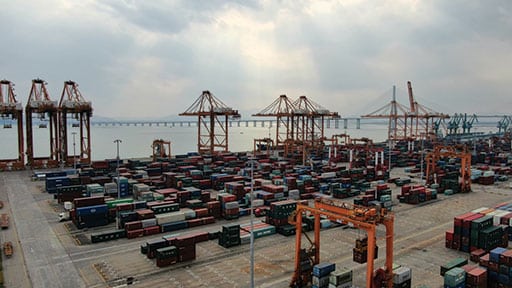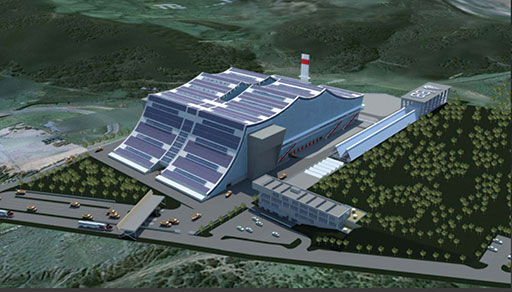The technology commonly used today for security is, in general, basic and exhaustive of what is already known and familiar to us and clear. There is no real desire to put into use new things that have not been tried to the end and found to be 100 percent suitable — really why take a risk?
The level of security cameras used in most facilities is basic — although there are now security cameras with amazing capabilities. This is where the components of the expensive price come in, as the camera becomes more sophisticated.
In the world of X-ray machines for passenger luggage — there is nothing new and they have reached the best possible extraction and configuration of the systems that know how to give the officer in charge a good enough picture to know if there is a dangerous threat in the bag.

In high-energy x-ray systems — the technology reaches the maximum capacity and ratio between the strength of the x-ray source and the penetration capacity (over 300mm steel), without over-bleaching some of the components in the image.
In the field of detection based on sniffing in air pumping — the dogs are still in control. There is currently no sniffing device that can mimic the abilities that a dog’s nose exhibits, whether it’s explosives, drugs, money or weapons.
What the World Has to Offer, Today
A number of companies have managed to break through and get out of the box in creative thinking and in search of new technologies. For example, before the spread of the COVID-19, the U.S company called PassPort Systems introduced an impressive capability with a high-energy X-ray system built in the Port of Boston. This system was able to perform an X-ray scan of a container or truck and automatically detect threatening materials embedded in the library within the software.
Another U.S company, Decision Science which has based its detection capability on muon detectors, which consist of photomultiplying tubes lined with a scintillator, a material that emits light when struck by a charged particle. When a particle such as a muon bounces through the detector, the photomultiplying tube multiplies the current produced by the emitted light. Here, like before, the capability was based on identifying hazardous materials in a container or truck automatically.
These companies have not yet broken into the world of goods inspection for a number of possible reasons.
In the field of artificial intelligence there has been significant progress in the last two years. The right combination of artificial intelligence software and existing systems in everyday use manage to run fast processes and calculations that could not be performed before.
For example, two Israeli companies: Neural Guard and See True, have developed software that knows how to automatically detect threats in X-ray images. Each one of the companies connected their software to a simple single-view X-ray machine testing it with a wide variety of threats such as knives, guns, grenades etc. The detection percentages demonstrated using these software have reached almost 100 percent, and the percentage of false alarms was extremely low.
Facial recognition and analytical video — here the issue is a bit complex. Because facial recognition is part of a biometric process, not all countries have the option to use the technology freely. The principle of protection of privacy prevails, in most cases, over the operational needs of the police or security forces. The capabilities available today are partly good but some still depend on the right balance between the quality of the camera and its location in space relative to existing lighting and background noise.
The use of analytical video is not fully implemented by potential stakeholders. There does not appear to be a sufficient desire on the part of security officials to rely on these technological capabilities for fear of false alarms or dependence on a new and unfamiliar protection component.
Geofencing again calls into question the protection of privacy. It is possible today to produce fence alerts when a particular cell phone crosses a predetermined polygon. It is also possible to produce a law that warns of the approach of several cell phones together, and of course more similar options can be produced. The capabilities of cell phone monitoring, whether through networks or through the establishment of field monitoring portals, exists. But its use requires legal backing. It can be said that here technology is ahead of procedures and laws.
Regarding the replacement of sniffer dogs — there are still a number of experimental projects that are currently running. For example, an Israeli company called Tracesens – works on the principle of air suction and innovative electro-chemical sensing technology analysis. Another Israeli company called STI deals with air pumping and analysis based on Gas Chromatograph with Electron Capture Detector. A third Israeli company called MS-Tech uses high frequency quartz crystal microbalance sensors. The ability of these companies to detect explosives in different scenarios already exists today. But of course, the means need to be tailored to the right operational need.
Using Technology with a True Vision
Operation Trojan Shield – In this amazing and integrated operation, which crossed continents and with the participation of about 18 law enforcement agencies, they managed to capture a huge network of a criminal organization that operated across the globe. In a clever and ingenious move, the law enforcement agencies decided that they would prepare encrypted cell phones in advance (and prepare them as new, in new covers), which they would pass on to the individuals in the same organization. The criminals’ use of these cell phones allowed for close and thorough monitoring of everything that was happening in the organization.

Automatic Ports in China – A first-of-its-kind automated port was inaugurated in Shandong Province, China. The port, equipped with 22 cranes and a fleet of remotely operated and supervised trucks, can handle about six hundred containers each morning.


Istanbul Waste Power Plant – When it comes to turning straw into gold, it seems that the Istanbul municipality has found the right way. The plant, which was built together with Hitachi Zosen Inova, takes about 3,000 tons of garbage a day, burning it at a temperature of between 800-1,000 degrees Celsius. From the heat generated, it operates power turbines that provide electricity consumption to one and a half million people.
How Far Can We Go?
We know, for example, that the ability to analyze the electrical voltage calculations coming to the detectors of X-ray machines allows us a certain degree of data decoding. Imagine that the ability to calculate will increase, with the help of artificial intelligence, so that it is possible to translate some of the data into a match between pre-known results of certain threat materials entered inside the library on the computer. The ability to detect materials on an X-ray scan is one of the most important that is expected to develop. Consider that this capability can be used with any type of sensor.
Shared Vision
The world of technology today is like an open ocean with quite a few options, and yes, some of them can also be applied in the world of security. In order to accommodate the existing technology today one needs to adopt a shared vision in a holistic view of operational versus threats versus technology, or in other words, one needs the courage to embrace progress.
